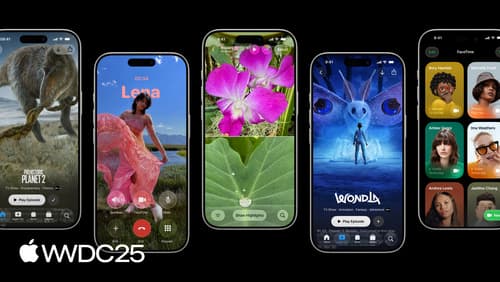new in UIKit
Asked on 2025-06-16
1 search
At WWDC, Apple introduced several new features and enhancements in UIKit. Here are some of the key updates:
-
Document Launch Experience: There's a redesigned launch experience for document-based apps, allowing for more control over launch views and template document creation. This helps in guiding users to create their first document while maintaining a great browsing experience. What’s new in UIKit
-
Tabs and Sidebar Updates: Major updates to tabs and sidebars have been introduced, including a new syntax in SwiftUI for tab views and improvements in the appearance and behavior of navigation bars and toolbars. What’s new in UIKit
-
Fluid Transitions: New fluid transitions have been added, which are more responsive and allow users to interact with content without waiting for animations to finish. What’s new in UIKit
-
SwiftUI and UIKit Interoperability: Enhancements have been made to improve the interoperability between SwiftUI and UIKit, including the ability to use SwiftUI animation types to animate UIKit views. What’s new in UIKit
-
Automatic Trait Tracking: UIKit now supports automatic trait tracking, making it easier to handle changes in traits without manual registration. What’s new in UIKit
-
UIUpdateLink: A new feature in iOS 18, UIUpdateLink, simplifies implementing complex animations that require periodic UI updates. What’s new in UIKit
-
New Design System: A new design system has been introduced, featuring a material called Liquid Glass, which is dynamic and translucent, enhancing the look and feel of materials and controls across the system. What’s new in UIKit
-
Menu Bar on iPadOS: iOS 26 brings the menu bar from macOS to iPadOS, providing quick access to app functionality even without a hardware keyboard. What’s new in UIKit
-
Architectural Improvements: UIKit now integrates Swift observation at its core, automatically tracking observable view references and invalidating views as needed. What’s new in UIKit
These updates aim to enhance the user interface experience and improve the integration between UIKit and SwiftUI, making it easier for developers to create more dynamic and responsive apps.

What’s new in UIKit
Explore everything new in UIKit, including tab and document launch experiences, transitions, and text and input changes. We’ll also discuss better-than-ever interoperability between UIKit and SwiftUI animations and gestures, as well as general improvements throughout UIKit.

What’s new in UIKit
Modernize your app with the latest APIs in UIKit, including enhanced menu bar support, automatic observation tracking, a new UI update method, and improvements to animations. We’ll also cover how you can include SwiftUI scenes in your UIKit app and explore SF Symbols, HDR color pickers, and more.

Build a UIKit app with the new design
Update your UIKit app to take full advantage of the new design system. We’ll dive into key changes to tab views, split views, bars, presentations, search, and controls, and show you how to use Liquid Glass in your custom UI. To get the most out of this video, we recommend first watching “Get to know the new design system” for general design guidance.
